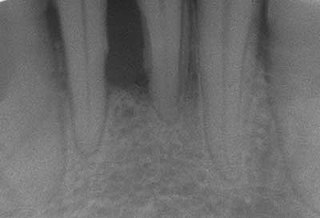Related Research Articles

Metabolic syndrome is a clustering of at least three of the following five medical conditions: abdominal obesity, high blood pressure, high blood sugar, high serum triglycerides, and low serum high-density lipoprotein (HDL).

Atherosclerosis is a pattern of the disease arteriosclerosis in which the wall of the artery develops abnormalities, called lesions. These lesions may lead to narrowing due to the buildup of atheromatous plaque. At onset there are usually no symptoms, but if they develop, symptoms generally begin around middle age. When severe, it can result in coronary artery disease, stroke, peripheral artery disease, or kidney problems, depending on which arteries are affected.

Homocysteine is a non-proteinogenic α-amino acid. It is a homologue of the amino acid cysteine, differing by an additional methylene bridge (-CH2-). It is biosynthesized from methionine by the removal of its terminal Cε methyl group. In the body, homocysteine can be recycled into methionine or converted into cysteine with the aid of vitamin B6, B9, and B12.

Periodontal disease, also known as gum disease, is a set of inflammatory conditions affecting the tissues surrounding the teeth. In its early stage, called gingivitis, the gums become swollen and red and may bleed. It is considered the main cause of tooth loss for adults worldwide. In its more serious form, called periodontitis, the gums can pull away from the tooth, bone can be lost, and the teeth may loosen or fall out. Bad breath may also occur.

The Mediterranean diet is a diet inspired by the eating habits and traditional food typical of Portugal, southern Spain, southern Italy, Crete and much of the rest of Greece discovered internationally in the early 1960s. This differentiates it from Mediterranean cuisine, which occurs naturally in Mediterranean countries and is inherent to them. While inspired by a specific time and place, the "Mediterranean diet" was later proven and refined based on the results of multiple scientific studies.

Cardiovascular disease (CVD) is any disease involving the heart or blood vessels. CVDs constitute a class of diseases that includes: coronary artery diseases, stroke, heart failure, hypertensive heart disease, rheumatic heart disease, cardiomyopathy, abnormal heart rhythms, congenital heart disease, valvular heart disease, carditis, aortic aneurysms, peripheral artery disease, thromboembolic disease, and venous thrombosis.

Hypercholesterolemia, also called high cholesterol, is the presence of high levels of cholesterol in the blood. It is a form of hyperlipidemia, hyperlipoproteinemia, and dyslipidemia.

A plant-based diet is a diet consisting mostly or entirely of plant-based foods. Plant-based diets encompass a wide range of dietary patterns that contain low amounts of animal products and high amounts of plant products such as vegetables, fruits, whole grains, legumes, nuts and seeds. They do not need to be vegan or vegetarian but are defined in terms of low frequency of animal food consumption.
An environmental factor, ecological factor or eco factor is any factor, abiotic or biotic, that influences living organisms. Abiotic factors include ambient temperature, amount of sunlight, and pH of the water soil in which an organism lives. Biotic factors would include the availability of food organisms and the presence of biological specificity, competitors, predators, and parasites.
The Framingham Heart Study is a long-term, ongoing cardiovascular cohort study of residents of the city of Framingham, Massachusetts. The study began in 1948 with 5,209 adult subjects from Framingham, and is now on its third generation of participants. Prior to the study almost nothing was known about the epidemiology of hypertensive or arteriosclerotic cardiovascular disease. Much of the now-common knowledge concerning heart disease, such as the effects of diet, exercise, and common medications such as aspirin, is based on this longitudinal study. It is a project of the National Heart, Lung, and Blood Institute, in collaboration with Boston University. Various health professionals from the hospitals and universities of Greater Boston staff the project.

Bacteroides is a genus of Gram-negative, obligate anaerobic bacteria. Bacteroides species are non endospore-forming bacilli, and may be either motile or nonmotile, depending on the species. The DNA base composition is 40–48% GC. Unusual in bacterial organisms, Bacteroides membranes contain sphingolipids. They also contain meso-diaminopimelic acid in their peptidoglycan layer.

Allostatic load is "the wear and tear on the body" which accumulates as an individual is exposed to repeated or chronic stress. The term was coined by Bruce McEwen and Eliot Stellar in 1993. It represents the physiological consequences of chronic exposure to fluctuating or heightened neural or neuroendocrine response which results from repeated or prolonged chronic stress.
Caffeine-induced sleep disorder is a psychiatric disorder that results from overconsumption of the stimulant caffeine. Caffeine is one of the most widely consumed psychoactive drugs: almost 90% of Americans in a survey consume some type of caffeine each day. "When caffeine is consumed immediately before bedtime or .... throughout the day, sleep onset may be delayed, total sleep time reduced, normal stages of sleep altered, and the quality of sleep decreased." Caffeine reduces slow-wave sleep in the early part of the sleep cycle and can reduce rapid eye movement sleep later in the cycle. Caffeine increases episodes of wakefulness, and high doses in the late evening can increase sleep onset latency. In elderly people, there is an association between use of medication containing caffeine and difficulty in falling asleep.

Fatty acid desaturase 2 (FADS2) is encoded by the FADS2 gene, the associated enzyme is sometimes known as FADS2 as well. Its main associated enzyme is Delta 6 desaturase (D6D) however the human enzyme been shown to also catalyze some delta-8 and delta-4 desaturases despite naming conventions.
A person's waist-to-height ratio (WHtR), occasionally written WtHR or called waist-to-stature ratio (WSR), is defined as their waist circumference divided by their height, both measured in the same units. It is used as a predictor of obesity-related cardiovascular disease. The WHtR is a measure of the distribution of body fat. Higher values of WHtR indicate higher risk of obesity-related cardiovascular diseases; it is correlated with abdominal obesity.

The exposome is a concept used to describe environmental exposures that an individual encounters throughout life, from conception to death. It encompasses both external and internal factors, including chemical, physical, biological, and social factors that may influence human health.

An epigenome-wide association study (EWAS) is an examination of a genome-wide set of quantifiable epigenetic marks, such as DNA methylation, in different individuals to derive associations between epigenetic variation and a particular identifiable phenotype/trait. When patterns change such as DNA methylation at specific loci, discriminating the phenotypically affected cases from control individuals, this is considered an indication that epigenetic perturbation has taken place that is associated, causally or consequentially, with the phenotype.

Stephanie J. London is an American epidemiologist and physician-scientist specializing in environmental health, respiratory diseases, and genetic susceptibility. She is the deputy chief of the epidemiology branch at the National Institute of Environmental Health Sciences.
Biological inequity, also known as biological inequality, refers to “systematic, unfair, and avoidable stress-related biological differences which increase risk of disease, observed between social groups of a population”. The term developed by Centric Lab aims to unify societal factors with the biological underpinnings of health inequities – the unfair and avoidable differences in health status and risks between social groups of a population - such that these inequalities can be investigated in a holistic manner.
References
- ↑ Patel, Chirag J.; Bhattacharya, Jayanta; Butte, Atul J. (2010-05-20). Zhang, Baohong (ed.). "An Environment-Wide Association Study (EWAS) on Type 2 Diabetes Mellitus". PLOS ONE. 5 (5): e10746. Bibcode:2010PLoSO...510746P. doi: 10.1371/journal.pone.0010746 . ISSN 1932-6203. PMC 2873978 . PMID 20505766.
- ↑ Zhuang, Xiaodong; Ni, Ao; Liao, Lizhen; Guo, Yue; Dai, Wei; Jiang, Yunxi; Zhou, Huimin; Hu, Xun; Du, Zhimin; Wang, Xueqin; Liao, Xinxue (February 2018). "Environment-wide association study to identify novel factors associated with peripheral arterial disease: Evidence from the National Health and Nutrition Examination Survey (1999–2004)". Atherosclerosis. 269: 172–177. doi:10.1016/j.atherosclerosis.2018.01.006. PMID 29366990. S2CID 46876807.
- ↑ McGinnis, Denise P.; Brownstein, John S.; Patel, Chirag J. (September 2016). "Environment-Wide Association Study of Blood Pressure in the National Health and Nutrition Examination Survey (1999–2012)". Scientific Reports. 6 (1): 30373. Bibcode:2016NatSR...630373M. doi:10.1038/srep30373. ISSN 2045-2322. PMC 4960597 . PMID 27457472.